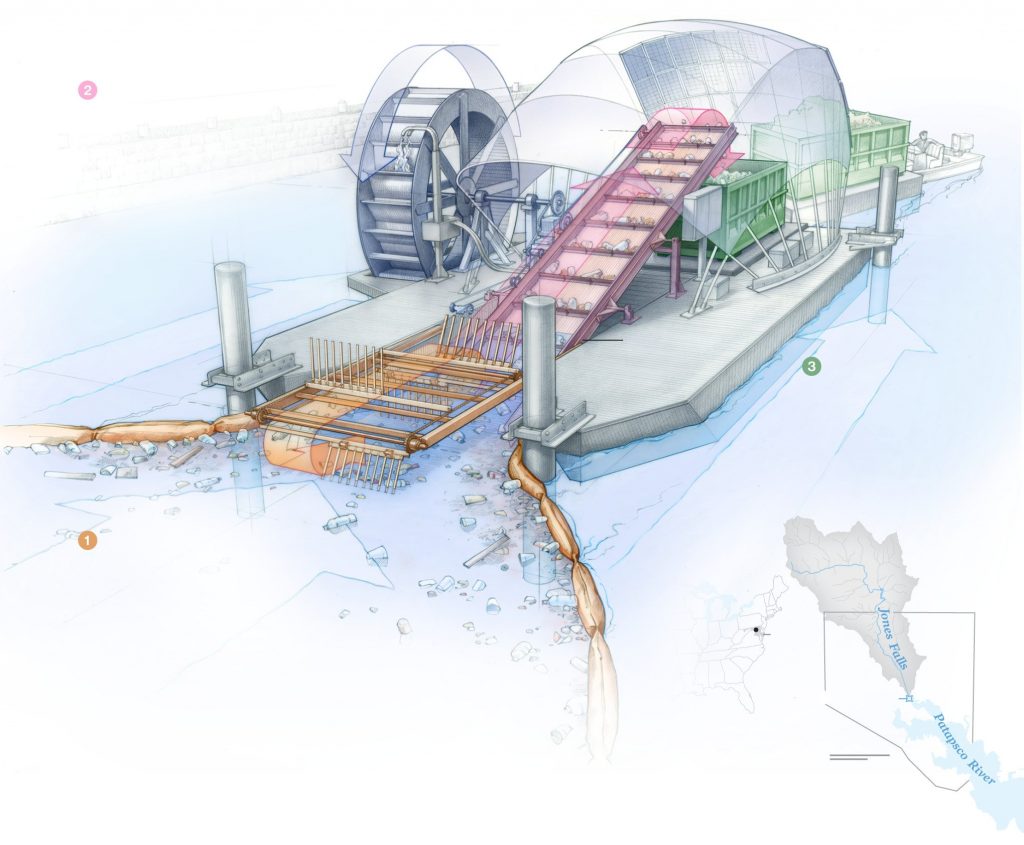Mr. Trash Wheel and Professor Trash Wheel, the latter of which was installed in December, are solar- and hydro-powered trash interceptors based in Baltimore’s Inner Harbor, clearing debris before it enters the Chesapeake Bay. Over a million pounds of trash has been pulled out of the water by Mr. Trash Wheel since it was installed in May 2014.
This large trash-collecting wheel, considered a “semi-autonomous” trash interceptor, was designed to be efficient at removing trash from bodies of water while also being able to withstand powerful storms.

The trash wheel’s creator, John Kellett, worked on the harbor for years and saw garbage floating on the water every day. Walking across a footbridge, he saw first-hand how plastic cups, bags, cigarette butts, bottles and other man-made detritus floated into Baltimore Harbor en route to Chesapeake Bay. A sailor and engineer, he approached the city and offered to take a stab at cleaning up the harbor. He built a pilot trash wheel and installed it in 2008.
“Every day I was constantly confronted with the trash in the harbor,” Kellett tells Verdict.

The contraption works by drawing power from solar panels and the current of Jones Falls River to turn a waterwheel, which in turn powers a conveyer belt. Containment booms direct the trash towards the conveyer belt, which then drops the debris into a waiting Dumpster. That bin sits on its own platform and can be floated out when it’s time to change it. Thanks to an onboard internet connection, Kellett and his team members are also able to monitor the entire process on their smartphones.

Despite its reasonably simplistic design, Mr Trash Wheel has become a local attraction. The googly-eyed trash interceptor is the theme of a public festival and local breweries have named beers after it. Mr Trash Wheel even has its own Instagram account, and a semi-secret society of fans called The Order of the Wheel.
Once the trash is removed from the water, Maryland incinerates it as a source of electricity, powering homes throughout the area.
“I thought we were being ambitious with the harbor but now people are talking about cleaning up the ocean,” Kellett said. “But I think the most effective solution is to get the trash before it gets there.”


